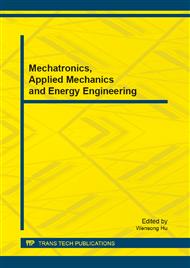[1]
A. H. D., Cheng and Cheng, D T. Heritage and early history of the boundary element method, Engineering Analysis with Boundary Elements, Elsevier (2005).
DOI: 10.1016/j.enganabound.2004.12.001
Google Scholar
[2]
T. W. Ulrich, F. A. Moslehy, A boundary element method for stress reduction by optimal auxiliary holes, Engineering Analysis with Boundary Elements, 15, 219-223 (1995).
DOI: 10.1016/0955-7997(95)00025-j
Google Scholar
[3]
A R Meric, Differential and integral sensitivity formulations and shape optimization by BEM, Engineering Analysis with Boundary Elements, 15, 181-188 (1995).
DOI: 10.1016/0955-7997(95)00016-h
Google Scholar
[4]
E. Kita, H. Tanie, Shape optimization of continuum structures by genetic algorithm and boundary element method, Engineering Analysis with Boundary Elements, 19, 129-136 (1997).
DOI: 10.1016/s0955-7997(97)00014-3
Google Scholar
[5]
Cerrolaza, M, Annicchiarico, W, Martinez, M, Optimization of 2D boundary element models using β-splines and genetic algorithms, Engineering Analysis with Boundary Elements, 24, 427-440 (2000).
DOI: 10.1016/s0955-7997(00)00006-0
Google Scholar
[6]
Marczak, R. Topology optimization and boundary elements - a preliminary implementation for linear heat transfer. Engineering Analysis with Boundary Elements, 31, 793-802, (2007).
DOI: 10.1016/j.enganabound.2007.01.005
Google Scholar
[7]
Anflor C T M, R. Marczak, A boundary element approach for topology design in diffusive problems containing heat sources, International Journal of Heat and Mass Transfer, 52, 4604–4611, (2009).
DOI: 10.1016/j.ijheatmasstransfer.2009.02.048
Google Scholar
[8]
Neches, L C, A P Cisilino, Topology optimization of 2D elastic structures using boundary elements, Engineering Analysis with Boundary Elements32, 533–544, (2008).
DOI: 10.1016/j.enganabound.2007.10.003
Google Scholar
[9]
Marczak, R J, Optimization of elastic structures using boundary elements and a topological-shape sensitivity formulation, Latin American Journal of Solids and Structures 5 99-117 (2008).
Google Scholar
[10]
Katsikadelis, J, Boundary Elements Theory and Applications, Elsevier(2002).
Google Scholar
[11]
Kane, J.H. Boundary Element Analysis in Engineering Continuum Mechanics, Prentice Hall, EnglewoodClis (1994).
Google Scholar
[12]
Novotny, A. A. Análise de Sensibilidade Topológica, LNCC/MCT, D. Sc., Modelagem Computacional, (2003).
Google Scholar
[13]
Anflor C T M, R. Marczak, Topological Optimization of Anisotropic Heat Conducting Devices using Bezier-Smoothed Boundary Representation, Computer Modeling in Engineering & Sciences, 78, 151-168 (2011).
Google Scholar


